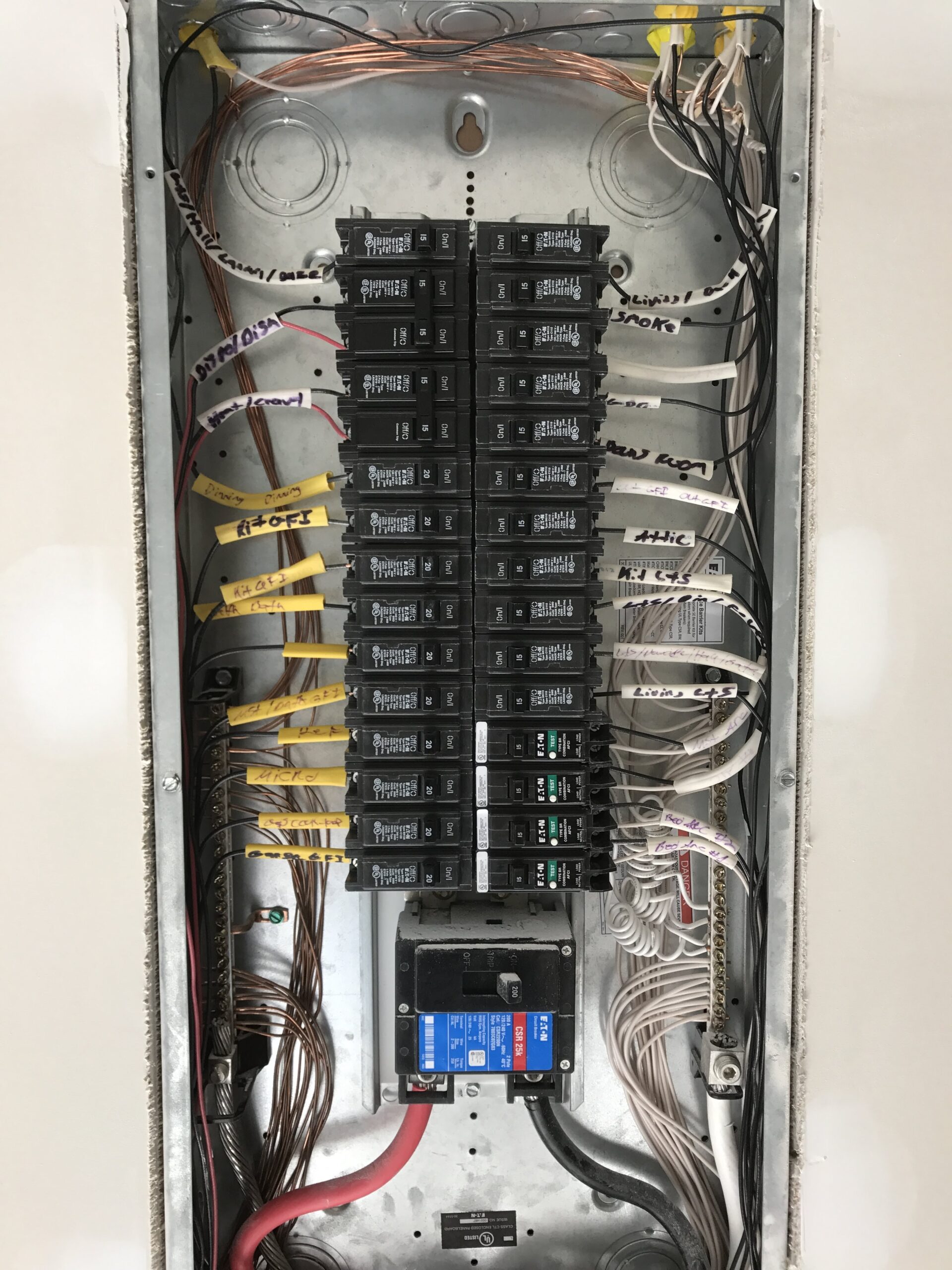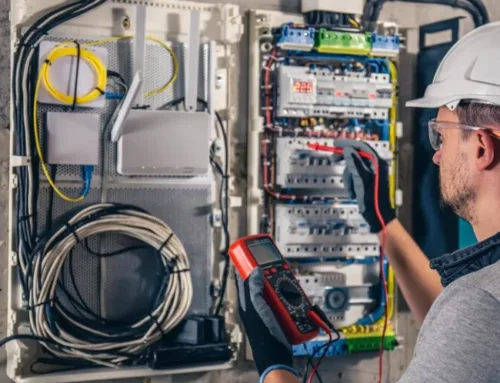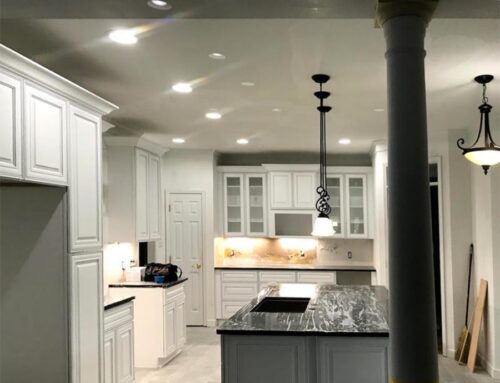When it comes to home safety, the electrical panel is often overlooked. But keeping the area around it clear isn’t just about tidying up—it’s crucial for preventing hazards. A cluttered or blocked electrical panel can slow down emergency repairs or, worse, make it difficult to shut off power during a crisis.
Ensuring proper clearance isn’t just a good practice; it’s a safety must. A little space around your panel can protect your home, your family, and your peace of mind.
Why is Electrical Panel Clearance Often Ignored During Building Design?
Electrical panel clearance is a vital safety aspect, but it’s often overlooked during the building design process. There are several reasons this occurs, many rooted in misunderstandings, space constraints, and cost-cutting measures.
- Lack of Awareness of Safety Codes
Not all architects, builders, or designers are well-versed in electrical safety codes. While electricians are familiar with regulations like the National Electrical Code (NEC), others involved in the design process may not prioritize electrical panel clearance. As a result, safety regulations are often overlooked as a secondary concern. - Space Constraints
In both residential and commercial spaces, maximizing usable space is a top priority. Electrical panels are sometimes placed in tight spaces like narrow hallways or utility rooms, making it easy to overlook clearance requirements. In an effort to make rooms feel larger or fit more within a layout, proper clearance around the panel is often sacrificed. - Cost Cutting
Cutting corners is a common strategy during construction to reduce costs, and electrical panel clearance is an easy area to compromise. Many think that reducing the space around an electrical panel will save time and money. However, this approach can result in costly repairs, inspections, and even emergency situations that could have been avoided. - Misunderstanding of “Clearance”
There’s often confusion about what constitutes adequate clearance. Some believe that even a small gap is sufficient, while others underestimate the amount of space needed for safe operation. In reality, electrical panel clearance is about more than just leaving room—it’s about ensuring that the panel is accessible and functional during both routine and emergency situations.
How Does Limited Panel Clearance Increase the Risk of Electrical Hazards?
Limited electrical panel clearance isn’t just an aesthetic issue—it’s a serious safety concern. Without adequate space around the panel, several hazards increase:
- Restricted Access During Maintenance
Limited clearance makes it difficult for electricians to access the panel quickly. This delay can prevent issues from being addressed promptly. If wiring is damaged or a fuse blows, quick access is needed to prevent further damage or hazards. Without the necessary space, problems may be ignored or take longer to fix. - Increased Fire Risk
Electrical panels are high-heat areas, and if they’re surrounded by clutter or poorly ventilated, the risk of overheating increases. Insufficient clearance traps heat, which can lead to wire insulation breakdown, sparking, and ultimately fires. A clear area ensures proper airflow and helps prevent heat buildup that could cause electrical fires. - Compromised Circuit Breaker Function
Circuit breakers are crucial in preventing electrical overloads and fires. If the panel is crowded, it becomes harder to reach the breakers quickly in an emergency. In extreme cases, overcrowding can even prevent breakers from functioning properly, leaving the system vulnerable to damage and risk. - Physical Injury Risks
With poor clearance, there’s a higher risk of physical injury. Electricians or homeowners attempting repairs in cramped spaces may inadvertently bump into wires or components, leading to accidents. Tight spaces increase the likelihood of electrical shock or mishaps while trying to handle electrical components in unsafe conditions.
What Role Does Panel Clearance Play in Meeting Workplace Safety Standards?
Adequate electrical panel clearance is not only essential for safety—it’s also a requirement in meeting workplace safety standards, particularly under regulations from organizations like OSHA and NFPA.
- Adherence to NEC (National Electrical Code) Standards:
The NEC sets strict guidelines for electrical panel clearance. For example, there must be at least 36 inches of space in front of the electrical panel for safe operation. Failure to adhere to these standards can result in penalties during inspections and increase the risk of accidents. - OSHA and NFPA Compliance:
Both OSHA and NFPA regulations require proper electrical panel clearance in workplaces to reduce the risk of electrical hazards. OSHA mandates that employers maintain safe working conditions, which includes ensuring that electrical panels are accessible for maintenance and emergencies. Non-compliance could result in workplace injuries and legal consequences. - Employee Safety and Training:
Maintaining proper clearance is also part of worker safety training, particularly in industries where electrical hazards are common. Ensuring that electrical panels are easily accessible for quick repairs and emergency situations helps keep employees safe, and it also ensures that the company meets its safety obligations.
Can Poor Clearance Around Electrical Panels Impact Emergency Response Times?
In an emergency, every second counts. Poor clearance around electrical panels can significantly delay response times when issues arise.
- Emergency Access Delays
In an electrical emergency, quick access to the panel is critical to cut off power and prevent further issues. Limited clearance prevents both emergency responders and electricians from quickly accessing the panel, which can cause delays in stopping the hazard and potentially lead to more damage or injuries. - Impaired Visibility
Clutter around an electrical panel can obstruct visibility of key components like circuit breakers and labels. In an emergency, it’s crucial to quickly identify the right breaker or fuse. Without proper clearance, labels and components may be blocked, making it difficult for responders to act swiftly. - Complicating Repairs
After an electrical failure, limited space around the panel makes repairs more difficult and time-consuming. Technicians may struggle to identify the root of the problem or access the necessary tools, leading to longer downtime, especially in businesses relying heavily on electrical systems.
Prioritize Electrical Panel Clearance for Safety and Compliance
Electrical panel clearance is often overlooked, but it’s a vital aspect of both safety and compliance. Whether you’re designing a new building, renovating an existing one, or performing routine maintenance, ensuring proper clearance around electrical panels is essential for minimizing hazards, adhering to regulations, and facilitating efficient emergency response.
By prioritizing electrical panel clearance, you’re not just protecting people and property; you’re also ensuring the longevity and reliability of your electrical infrastructure. Don’t let this small but critical detail go unnoticed—make sure your electrical panels have the space they need to function safely and efficiently.
Power Up Your Safety with Starnes Electric LLC
At Starnes Electric LLC, we understand the importance of electrical safety. Whether you’re designing a new facility, retrofitting an existing one, or ensuring your electrical systems meet safety standards, our team is here to help. Contact us today to schedule a consultation and ensure your electrical panel clearance meets all the necessary regulations so you can stay safe, compliant, and operational.




